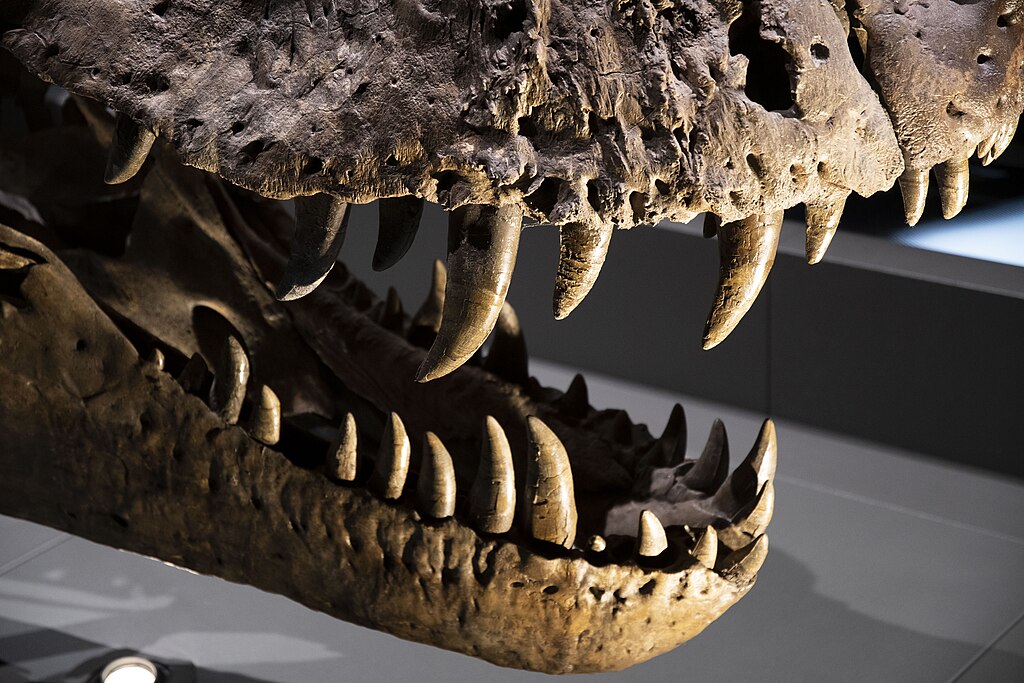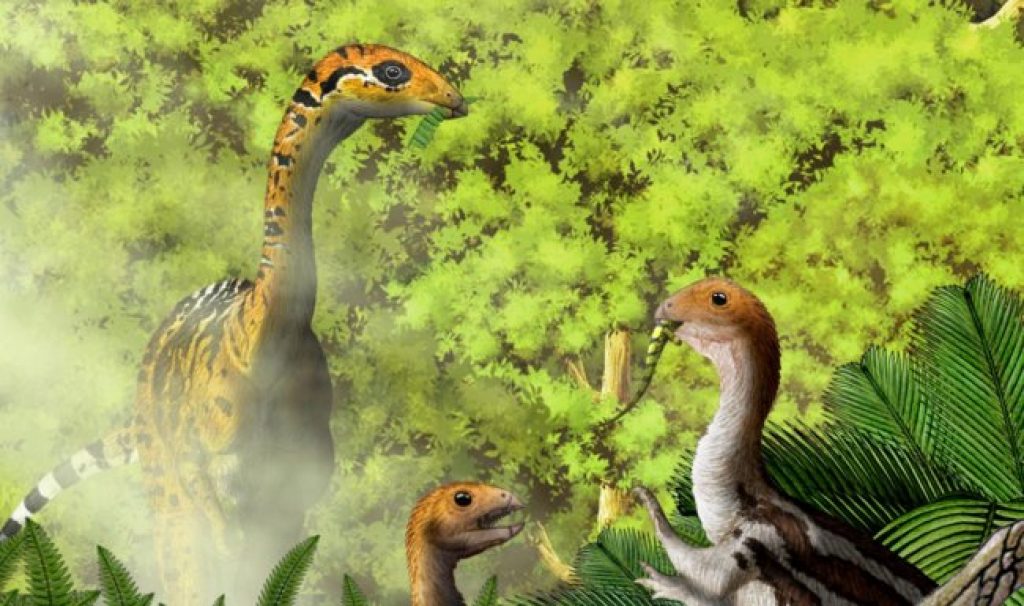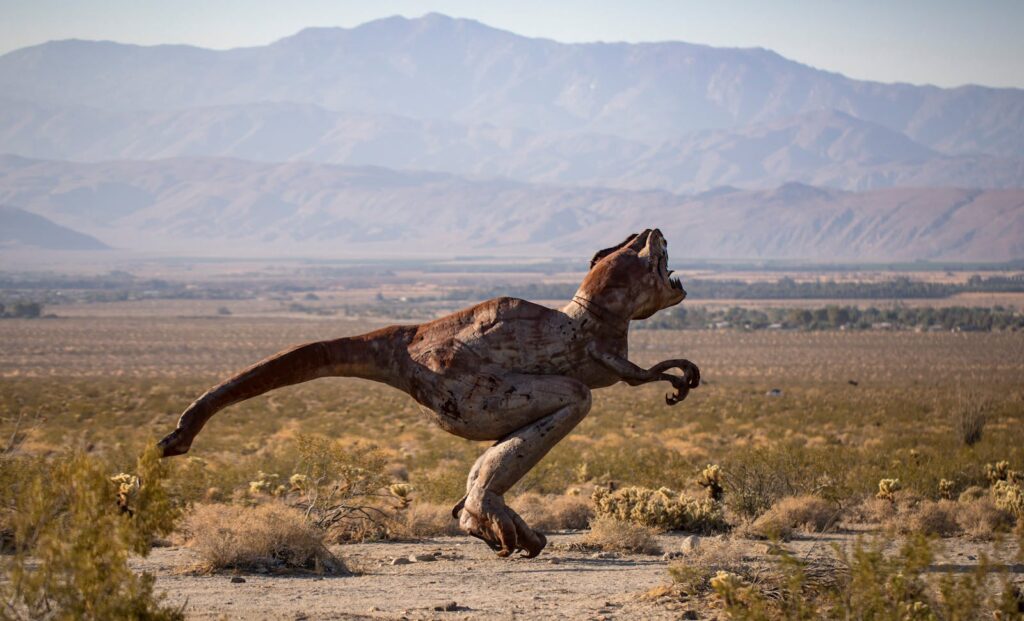When we think of dinosaurs, we often envision powerful, seemingly invincible creatures that dominated Earth for over 165 million years. Yet, like all living organisms, these prehistoric giants weren’t immune to illness and disease. Paleopathology—the study of ancient diseases and injuries—reveals that dinosaurs suffered from many of the same health issues that plague modern animals.
Through careful examination of fossilized bones, teeth, and occasionally preserved soft tissues, scientists have uncovered fascinating evidence of prehistoric maladies, opening a window into the vulnerable side of these magnificent creatures and the ecosystems they inhabited.
The Science of Dinosaur Diseases

Paleopathology combines principles from paleontology, medicine, and forensic science to identify evidence of disease in fossilized remains. Scientists meticulously examine abnormalities in bone structure, unusual growth patterns, and signs of healing to distinguish between injuries, developmental abnormalities, and diseases. Advanced imaging technologies like CT scans and micro-CT scanning have revolutionized this field, allowing researchers to peer inside fossils without damaging them.
These techniques can reveal minute details of bone architecture, infection-related changes, and even evidence of blood vessel patterns that might indicate inflammatory responses. Additionally, biochemical analyses can sometimes detect molecular markers of specific infections, providing further insights into the health challenges faced by dinosaurs millions of years ago.
Infectious Diseases in Dinosaurs

Evidence suggests dinosaurs battled various infectious diseases, much like modern animals. Perhaps the most compelling evidence comes from a Tyrannosaurus rex specimen nicknamed “Sue,” whose lower jaw shows lesions consistent with a protozoal infection similar to trichomonosis, which affects modern birds. Other fossils display signs of osteomyelitis, a bacterial infection of the bone and bone marrow that creates distinctive drainage channels as pus escapes from infected areas.
Researchers have also identified possible cases of tuberculosis-like infections in sauropod vertebrae, characterized by specific patterns of bone destruction. These findings demonstrate that pathogenic microorganisms coevolved with dinosaurs throughout the Mesozoic Era, creating disease dynamics that likely influenced population health and even evolution.
Traumatic Injuries and Subsequent Infections

Dinosaur fossils frequently show evidence of traumatic injuries that subsequently became infected. Broken bones that healed with significant deformities suggest severe infections complicated the healing process. One famous example is “Diane,” an Allosaurus with a severely injured shoulder blade that shows signs of massive infection following the initial trauma.
The bone displays excessive growth and unusual texture indicative of chronic osteomyelitis. Predatory dinosaurs seem particularly prone to these combat-related injuries and subsequent infections, likely due to their dangerous lifestyle involving hunting and territorial disputes. The fact that many of these injuries show signs of healing indicates that dinosaurs could sometimes survive significant infections, suggesting they possessed effective immune systems similar to their modern descendants, birds.
Cancer in Prehistoric Reptiles

Cancer was not exclusive to modern times, as paleontologists have discovered compelling evidence of various malignancies in dinosaur remains. In 2020, researchers identified a case of osteosarcoma—an aggressive bone cancer—in the fibula of a Centrosaurus apertus, representing the first confirmed case of malignant cancer in a dinosaur. The cancerous bone shows the characteristic “sunburst” pattern of new bone growth and destruction typical of this cancer type.
Other potential cases include possible metastatic cancer in duck-billed hadrosaurs and hemangiomas (benign vascular tumors) in other specimens. These discoveries challenge the notion that cancer is primarily a modern disease and suggest that the fundamental cellular mechanisms that lead to cancer have remained largely unchanged for over 70 million years.
Parasitic Infestations

Parasitism represents one of the oldest ecological relationships in nature, and dinosaurs were certainly not exempt from these unwanted guests. Though soft-bodied parasites rarely fossilize, scientists have found indirect evidence of their presence. Holes in some Tyrannosaurus rex teeth resemble those caused by parasitic infections similar to trichomonosis in modern birds. Some fossilized coprolites (preserved feces) contain eggs of intestinal parasites, suggesting dinosaurs suffered from internal parasitic infections.
Additionally, some researchers speculate that dinosaurs likely hosted external parasites similar to modern ticks and mites, though direct evidence remains exceptionally rare. One extraordinary discovery from Burmese amber revealed a tick preserved with dinosaur feathers, providing a tantalizing glimpse into the ectoparasites that may have troubled feathered dinosaurs.
Arthritis and Joint Diseases

Dinosaurs frequently developed degenerative joint diseases similar to arthritis in modern animals. Paleontologists have documented numerous cases of osteoarthritis, particularly in the weight-bearing joints of larger dinosaur species. One well-studied example comes from “Big Al,” an Allosaurus specimen that shows signs of arthritis in multiple joints, including its feet, vertebrae, and ribs.
The joints exhibit characteristic bone smoothing, spur formation, and fusion that typify advanced arthritis. These conditions likely caused significant pain and mobility limitations, potentially affecting hunting ability and overall survival.
Some ceratopsians (horned dinosaurs) show evidence of spondyloarthropathy, an inflammatory arthritis affecting the spine and potentially linked to their massive head structures. These findings suggest that biomechanical stress from large body size and specialized anatomical features contributed to joint degeneration in many dinosaur species.
Dental Diseases and Abnormalities

Teeth problems were not uncommon among dinosaurs, with various species showing evidence of dental diseases and abnormalities. Some theropod dinosaurs exhibit dental abscess cavities, where infection penetrated the pulp cavity of a tooth and created inflammation in surrounding bone tissue. Hadrosaurs, with their complex dental batteries consisting of hundreds of teeth, sometimes developed abnormal wear patterns and evidence of dental impaction.
One specimen of Edmontosaurus shows signs of severe periodontal disease that likely affected its ability to process food efficiently. Among tyrannosaurs, researchers have identified irregular tooth spacing, missing teeth, and bone remodeling that suggest chronic dental infections. These conditions would have impacted feeding efficiency and potentially overall health, as severe dental infections can lead to systemic illness in modern animals.
Developmental and Congenital Disorders

The fossil record has preserved evidence of various developmental and congenital disorders in dinosaurs. Several hadrosaur specimens display an abnormal fusion of vertebrae consistent with a condition similar to scoliosis or other spinal malformations. A specimen of Diplodocus shows evidence of a developmental disorder resulting in abnormally shaped vertebrae that would have created a distinctive hump in the animal’s back.
Some theropod fossils exhibit asymmetrical growth patterns that suggest developmental issues during early growth stages. The existence of these conditions indicates that dinosaurs, like modern animals, were susceptible to genetic mutations and developmental anomalies that affected their skeletal formation. The survival of individuals with these conditions to adulthood demonstrates that dinosaurs could sometimes compensate for significant physical abnormalities.
Evidence from Trackways

Fossilized footprints and trackways provide additional insights into dinosaur diseases, particularly those affecting locomotion. Some trackways show asymmetrical gait patterns consistent with injury or chronic pain that forced the animal to alter its normal walking pattern. Others reveal unusually shallow impressions from one limb compared to others, suggesting the dinosaur was favoring an injured or diseased leg.
A particularly informative trackway from the Early Cretaceous of Spain shows a series of footprints from a large theropod with one foot consistently making an unusual rotation pattern, potentially indicating a hip or foot abnormality. These trace fossils complement skeletal evidence by capturing behavioral adaptations to illness or injury, offering glimpses into how dinosaurs compensated for physical impairments during life.
How Dinosaurs Fought Disease

Dinosaurs likely possessed immune systems with surprising similarities to those of their living descendants—birds and crocodilians. Evidence of healed fractures, infections, and injuries suggests they could mount effective immune responses to pathogens and trauma. The discovery of medullary bone—a calcium-rich tissue found in female birds during egg-laying—in some dinosaur fossils hints at similar physiological processes that might have supported immune function. Since both modern birds and crocodiles produce antimicrobial peptides as part of their innate immune response, dinosaurs likely shared these protective mechanisms.
Additionally, social behaviors observed in many dinosaur species, such as herding in hadrosaurs and ceratopsians, may have provided protection against predators for sick or injured individuals, potentially allowing more time for recovery from illness.
Disease as an Evolutionary Force

Diseases likely played a significant role in dinosaur evolution, just as they do in modern ecosystems. Pathogenic pressures may have influenced the dinosaur immune system’s development, social behavior, and even physical characteristics. The presence of certain diseases might have created selection pressures favoring individuals with genetic resistance, potentially driving population-level adaptations over time.
Some researchers hypothesize that the evolution of feathers, which initially served functions other than flight, may have partially been influenced by their potential to deter ectoparasites through preening behaviors similar to those seen in modern birds. Disease dynamics could also have affected dinosaur population structures and distributions, potentially creating evolutionary bottlenecks during major disease outbreaks. Understanding these disease-evolution interactions provides a more complete picture of the complex factors that shaped dinosaur diversity throughout the Mesozoic.
Challenges in Studying Prehistoric Diseases

Studying diseases in extinct animals presents significant challenges that limit our understanding. The fossilization process itself preserves primarily hard tissues like bones and teeth, while soft tissues that might show evidence of many diseases rarely survive.
This creates a preservation bias toward conditions that affect the skeleton, leaving vast gaps in our knowledge about soft tissue ailments like respiratory infections or organ diseases. Distinguishing between pathological changes and post-mortem damage or geological deformation can be extremely difficult, requiring careful analysis.
The lack of living representatives of non-avian dinosaur lineages means researchers cannot observe disease progression or conduct comparative studies with closely related species. Additionally, the fragmentary nature of most fossil discoveries means scientists rarely have complete skeletons to examine, making it challenging to assess the full impact of diseases on individual animals.
Modern Relevance of Ancient Diseases

Studying dinosaur diseases offers surprising insights relevant to modern medicine and biology. By examining how diseases affected ancient ecosystems, scientists gain valuable perspective on the long-term dynamics of host-pathogen relationships and their evolutionary consequences. Some modern diseases share remarkable similarities with those identified in dinosaur remains, suggesting certain pathogenic mechanisms have remained consistent over millions of years.
For instance, the study of cancer in dinosaurs provides evidence that the fundamental cellular mechanisms underlying malignancies long predate human existence. Paleopathology also contributes to our understanding of how diseases might affect modern endangered species, particularly large-bodied animals with small population sizes, conditions that may parallel those of some dinosaur species.
As technology advances, the field continues to develop new techniques that bridge ancient and modern disease studies, creating an increasingly comprehensive view of disease throughout Earth’s history.
Future Directions in Dinosaur Paleopathology

The study of dinosaur diseases continues to evolve with new technologies and methodologies offering unprecedented insights. Advanced imaging techniques like synchrotron radiation and neutron tomography can reveal microstructural details previously invisible to researchers, potentially identifying subtle disease signatures.
Improvements in ancient DNA and protein recovery and analysis, though still limited for specimens as old as dinosaurs, might eventually allow the identification of specific pathogens or immune responses preserved in exceptionally well-preserved fossils. Machine learning algorithms are being developed to help identify and classify pathological features in fossils, potentially revealing patterns not obvious to human observers.
As more fossils are discovered and existing museum collections are reexamined with these new approaches, our understanding of dinosaur diseases will continue to expand. This growing field not only illuminates the lives of these ancient creatures but also provides valuable context for understanding disease evolution throughout Earth’s history.
Conclusion

Far from being invulnerable titans, dinosaurs experienced a wide range of diseases and health challenges throughout their long reign on Earth. The evidence preserved in their fossilized remains reveals creatures that suffered from infections, cancer, arthritis, and numerous other ailments—many strikingly similar to those affecting modern animals. These discoveries humanize these ancient beings, reminding us that even the most formidable prehistoric predators experienced vulnerability and suffering.
By continuing to investigate dinosaur diseases, scientists gain valuable insights into both ancient ecosystems and the fundamental biological processes that have shaped life on our planet for millions of years. The study of dinosaur paleopathology ultimately connects us to these distant relatives, revealing the shared biological heritage that unites all life on Earth across the vast expanse of evolutionary time.




